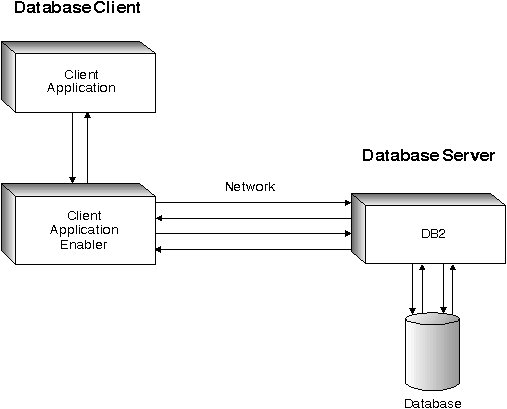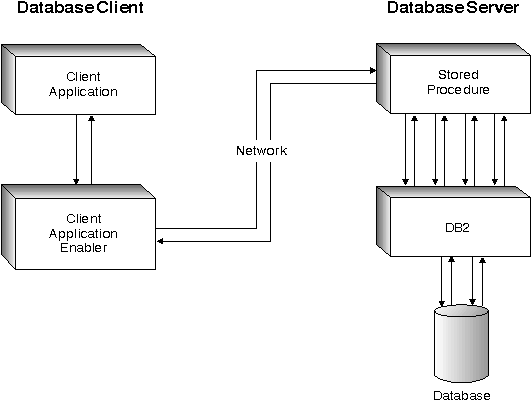

 |
|
|
| Embedded SQL Programming Guide | Explains how to develop applications that access DB2 databases using embedded SQL. Chapter 5 contains details about stored procedures. | |
| CLI Guide and Reference | Explains how to develop applications that access DB2 databases using the DB2 Call Level Interface. Chapter 3 contains details about stored procedures. | |
| Building Applications for UNIX Environments | Provides instructions to compile, link, and run stored procedures on a UNIX system. | |
| Building Applications for Windows and OS/2 Environments | Provides instructions to compile, link, and run stored procedures on a Windows or OS/2 system. | |
|
|
|
 |
|
|
|
|
|
| Embedded SQL | DB2 CLI |
| |
| inpcli | X |
| Demonstrates stored procedures using either the SQLDA structure or host variables. This is the client program of a client/server example. The server program is inpsrv. inpcli fills the SQLDA with information and passes it to the server program for further processing. | |
| inpsrv | X |
| Creates a table in the SAMPLE database with the information received in the SQLDA. Returns the SQLCA status to the client program inpcli. | |
| outcli | X |
| Demonstrates stored procedures using the SQLDA. This is the client program of a client/server example. The server program is outsrv. outcli allocates and initialized a one variable SQLDA, and passes it to the server program for further processing. | |
| outsrv | X |
| Finds the median salary, fills the SQLDA with the median, and returns the SQLDA and SQLCA status to the client program outcli. | |
|
|
|
|
|
 |
|
|
|
|
|
| Embedded SQL | DB2 CLI |
| |
| inpcli.c |
| X | Calls embedded SQL stored procedure inpsrv. | |
| inpcli2.c |
| X | Calls DB2 CLI stored procedure inpsrv2.c. | |
| inpsrv2.c |
| X | Stored procedure (rewrite of embedded SQL sample inpsrv). | |
|
|
|
|
|
Typically, applications access the database across the network. This can result in a lot of data being transmitted across the network, and poor performance.
Figure 13. Application accessing a database across the network
 |
A stored procedure is a part of your application that runs on the database server. Your client application passes control to the stored procedure allowing it to perform intermediate processing on the server without transmitting unnecessary data across the network. Only the records your application needs are transmitted by the stored procedure.
Figure 14. Application using a stored procedure
 |
You gain several benefits using stored procedures:
When an application calls the stored procedure, it will process data in a consistent way according to the rules defined in the stored procedure. If you need to change the rules, you only need to make the change once in the stored procedure, not in every application that calls the stored procedure.